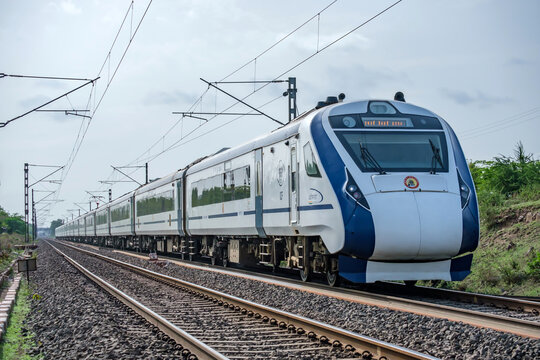The RRB ALP Selection Process 2026 is a multi-stage recruitment drive conducted by the Railway Recruitment Board (RRB) to select candidates for the prestigious role of Assistant Loco Pilot (ALP) in Indian Railways. With vacancies expected to be announced under CEN 01/2026, this is a prime opportunity for aspirants aiming to join one of India’s most sought-after government jobs. This comprehensive guide covers every stage of the selection process, exam patterns, syllabus, preparation tips, and a detailed FAQ section to help you succeed.
Overview of RRB ALP Recruitment 2026
The RRB ALP Recruitment 2026 aims to fill Assistant Loco Pilot posts across various railway zones. The selection process is rigorous, ensuring only the most qualified candidates are selected to operate trains and ensure passenger safety. The process includes four main stages, with an additional medical examination for final appointment:
- Computer-Based Test (CBT 1) – A qualifying exam.
- Computer-Based Test (CBT 2) – A merit-based exam with two parts.
- Computer-Based Aptitude Test (CBAT) – For ALP candidates, assessing cognitive and decision-making skills.
- Document Verification (DV) – Verification of eligibility and credentials.
- Medical Examination (ME) – Ensures candidates meet the physical and medical standards.
Successful candidates undergo mandatory training at Zonal Railway Training Institutes before starting their duties. Below, we break down each stage in detail to help aspirants prepare effectively.
RRB ALP Selection Process 2026: Detailed Stages
1. Computer-Based Test (CBT 1)
CBT 1 is the initial screening stage, designed to shortlist candidates for CBT 2. It is qualifying in nature, meaning its marks do not count toward the final merit list but are crucial for advancing.
- Exam Pattern:
- Duration: 60 minutes
- Total Questions: 75 (Multiple Choice Questions)
- Total Marks: 75 (1 mark per question)
- Negative Marking: 1/3 mark deducted for each wrong answer
- Subjects:
- Mathematics: 20 questions
- General Intelligence & Reasoning: 25 questions
- General Science: 20 questions
- General Awareness on Current Affairs: 10 questions
- Minimum Qualifying Marks:
- UR/EWS: 40%
- OBC (NCL): 30%
- SC: 30%
- ST: 25%
- Normalization: Applied if the exam is conducted in multiple shifts to ensure fairness.
- Syllabus:
- Mathematics: Number System, BODMAS, Decimals, Fractions, LCM & HCF, Ratio and Proportion, Percentages, Mensuration, Time and Work, Time and Distance, Simple and Compound Interest, Profit and Loss, Algebra, Geometry, Trigonometry, Elementary Statistics, Square Root, Age Calculations, Calendar & Clock, Pipes and Cisterns.
- General Intelligence & Reasoning: Analogies, Alphabetical and Number Series, Coding and Decoding, Mathematical Operations, Relationships, Syllogism, Jumbling, Venn Diagrams, Data Interpretation, Conclusions and Decision Making, Similarities and Differences, Analytical Reasoning, Classification, Directions, Statement-Arguments and Assumptions.
- General Science: Physics, Chemistry, and Life Sciences (up to 10th standard CBSE syllabus).
- General Awareness: Current Events (National and International), Indian Polity and Constitution, Indian Economy, Environmental Issues, Scientific and Technological Developments, Sports, Culture, History, Geography.
- Preparation Tips:
- Focus on NCERT textbooks (Class 8-10) for General Science.
- Practice mental math for quick calculations in Mathematics.
- Stay updated with daily news for General Awareness.
- Solve previous year’s question papers to understand question patterns.
2. Computer-Based Test (CBT 2)
CBT 2 is a merit-based exam, and its scores contribute to the final selection. It is divided into two parts: Part A (merit-based) and Part B (qualifying in nature).
- Exam Pattern:
- Total Duration: 2 hours 30 minutes
- Total Questions: 175
- Negative Marking: 1/3 mark deducted for each wrong answer
- Parts:
- Part A:
- Duration: 90 minutes
- Questions: 100
- Subjects: Mathematics, General Intelligence & Reasoning, Basic Science & Engineering
- Counts toward the final merit list
- Part B:
- Duration: 60 minutes
- Questions: 75
- Subject: Relevant Trade/Professional Knowledge (as per DGT syllabus)
- Qualifying in nature (minimum 35% marks required)
- Part A:
- Total Marks: 175 (Part A: 100, Part B: 75)
- Syllabus:
- Part A:
- Mathematics: Same as CBT 1.
- General Intelligence & Reasoning: Same as CBT 1.
- Basic Science & Engineering: Engineering Drawing (Projections, Views, Drawing Instruments, Lines, Geometric Figures, Symbolic Representation), Units, Measurements, Mass Weight and Density, Work Power and Energy, Speed and Velocity, Heat and Temperature, Basic Electricity, Levers and Simple Machines, Occupational Safety and Health, Environment Education, IT Literacy.
- Part B: Trade-specific topics based on ITI trades like Fitter, Electrician, Instrument Mechanic, Millwright, Maintenance Mechanic, Mechanic (Motor Vehicle/Radio & TV/Diesel), Electronics Mechanic, Wireman, etc.
- Part A:
- Preparation Tips:
- Study trade-specific books and DGT syllabus for Part B.
- Practice engineering drawing and basic mechanical concepts for Part A.
- Take mock tests to manage time effectively across both parts.
- Focus on accuracy to minimize negative marking.
3. Computer-Based Aptitude Test (CBAT)
The CBAT is mandatory for candidates applying for the ALP role. It assesses cognitive and decision-making skills essential for train operations.
- Key Details:
- Objective: Evaluate cognitive abilities, decision-making, and suitability for the ALP role.
- Qualifying Score: Minimum 42 marks in each test battery (no relaxation allowed).
- Scoring System: No negative marking.
- Medium: English and Hindi.
- Weightage: 70% from CBT 2 (Part A) + 30% from CBAT for the final merit list.
- Test Batteries: Includes tests on memory, attention, psychomotor skills, and reaction time.
- Preparation Tips:
- Practice online aptitude tests to familiarize yourself with the format.
- Focus on improving concentration and quick decision-making.
- Attempt free CBAT mock tests available on platforms like Oliveboard or Adda247.
4. Document Verification (DV)
After clearing CBT 1, CBT 2, and CBAT, candidates are called for Document Verification to confirm eligibility and authenticity of credentials.
- Purpose: Verify qualifications, age, identity, and category details.
- Required Documents:
- Original educational certificates and mark sheets (Matriculation/ITI/Diploma).
- Proof of age (Birth Certificate, Matriculation Certificate).
- Identity proof (Aadhaar Card, Passport, Voter ID).
- Category certificate (SC/ST/OBC/EWS, if applicable).
- Disability certificate (if applicable).
- No Objection Certificate (NOC) for government employees.
- Other documents as specified in the official notification.
- Process: Candidates must bring original documents and photocopies. Discrepancies or failure to produce required documents may lead to disqualification.
- Preparation Tips:
- Organize all documents in advance.
- Ensure certificates are valid and issued by recognized authorities.
- Double-check the RRB notification for any additional requirements.
5. Medical Examination (ME)
The final stage before appointment is the Medical Examination, ensuring candidates meet the A-1 medical standards required for ALP duties.
- Key Requirements:
- Vision: 6/6 without glasses, normal color vision, no night blindness.
- Physical Fitness: Adequate hearing, stamina, and overall health to handle locomotive duties.
- Conducted By: Railway Administration at designated medical facilities.
- Preparation Tips:
- Get a medical check-up before the exam to address any issues.
- Maintain good health and avoid activities that may affect vision or hearing.
- Familiarize yourself with A-1 medical standards from the RRB notification.
Training After Selection
Candidates who clear all stages are appointed as Assistant Loco Pilots and undergo mandatory training at Zonal Railway Training Institutes or designated centers. The training covers:
- Curriculum: Electrical, Mechanical, or combined syllabus based on post requirements.
- Duration: Typically 6 months to 1 year, depending on the training program.
- Purpose: Equips candidates with theoretical knowledge and practical skills for train operations.
Preparation Strategy for RRB ALP 2026
- Understand the Syllabus and Exam Pattern: Study the detailed syllabus for CBT 1 and CBT 2 to prioritize high-weightage topics.
- Create a Study Plan: Allocate time for each subject and stick to a timetable.
- Use Quality Study Material:
- NCERT books for General Science and Mathematics.
- Lucent’s General Knowledge for Current Affairs.
- Trade-specific ITI books for CBT 2 Part B.
- Practice Mock Tests: Enroll in online coaching or use platforms like Adda247, Oliveboard, or Testbook for mock tests.
- Solve Previous Year Papers: Understand question trends and difficulty levels.
- Stay Updated: Read newspapers daily for General Awareness.
- Time Management: Practice solving questions within the time limit to improve speed and accuracy.
- Regular Revision: Make short notes for quick revision of key concepts.
FAQs on RRB ALP Selection Process 2026
Q1. What is the RRB ALP Selection Process 2026?
The RRB ALP Selection Process 2026 consists of five stages: CBT 1 (qualifying), CBT 2 (merit-based), CBAT (aptitude test for ALP candidates), Document Verification, and Medical Examination.
Q2. How many stages are there in the RRB ALP exam?
There are five stages: CBT 1, CBT 2, CBAT, Document Verification, and Medical Examination.
Q3. Is CBT 1 qualifying in nature?
Yes, CBT 1 is a screening test, and its marks do not count toward the final merit list. Candidates must score the minimum qualifying marks to advance to CBT 2.
Q4. What is the qualifying score for CBAT?
Candidates must score at least 42 marks in each test battery of the CBAT, with no relaxation allowed.
Q5. Is there negative marking in CBAT?
No, there is no negative marking in the Computer-Based Aptitude Test.
Q6. What documents are required for Document Verification?
Candidates need original educational certificates, proof of age, identity proof, category certificate (if applicable), disability certificate (if applicable), and other documents specified in the RRB notification.
Q7. What are the medical standards for RRB ALP?
Candidates must meet the A-1 medical standard, including 6/6 vision without glasses, normal color vision, no night blindness, and adequate physical fitness.
Q8. How long is the ALP training period?
The training period typically lasts 6 months to 1 year, depending on the curriculum and training institute.
Q9. Is the ALP job transferable?
Yes, the ALP job is transferable across different railway zones, depending on organizational needs.
Q10. How many hours is the duty of an ALP?
The duty hours of an Assistant Loco Pilot vary but typically range from 6 to 8 hours per shift, depending on the train schedule and operational requirements.
Why Choose a Career as an RRB ALP?
Becoming an Assistant Loco Pilot offers a stable government job with attractive benefits:
- Initial Salary: ₹19,900/- (Level 2 of 7th CPC Pay Matrix) plus allowances.
- Job Security: Permanent position with Indian Railways.
- Career Growth: Opportunities for promotion to Senior ALP, Loco Pilot, and higher roles.
- Work Environment: Dynamic role involving train operations across India’s vast railway network.
The RRB ALP Selection Process 2026 is a challenging yet rewarding journey for aspirants aiming to join Indian Railways. By understanding each stage—CBT 1, CBT 2, CBAT, Document Verification, and Medical Examination—you can tailor your preparation to maximize your chances of success. Use the syllabus, exam pattern, and preparation tips provided in this guide, and leverage mock tests and previous year papers to stay ahead. Stay focused, stay healthy, and start your preparation today to achieve your dream of becoming an Assistant Loco Pilot!
Reference – www.rrbcdg.gov.in
RRB Group D Job Profile – Roles, Responsibilities, Salary, Promotions and Career Growth

Hi, I’m Varun Pathak, the founder of TheSarkariNaukri.com—a dedicated platform for the latest updates on government jobs (Sarkari Naukri) in India. With years of experience curating reliable information on job vacancies, admit cards, exam results, and preparation strategies, I help thousands of aspirants navigate the competitive world of public sector opportunities. Passionate about job security, career growth, and empowering freshers for roles like IAS, IPS, and PSU positions, I update the site regularly with actionable insights for 2025 and beyond. Let’s connect to turn your career dreams into reality!
